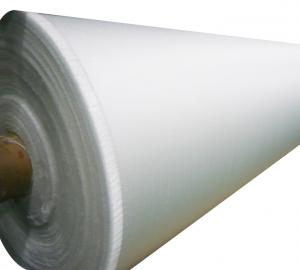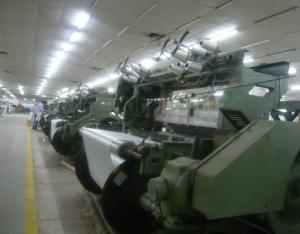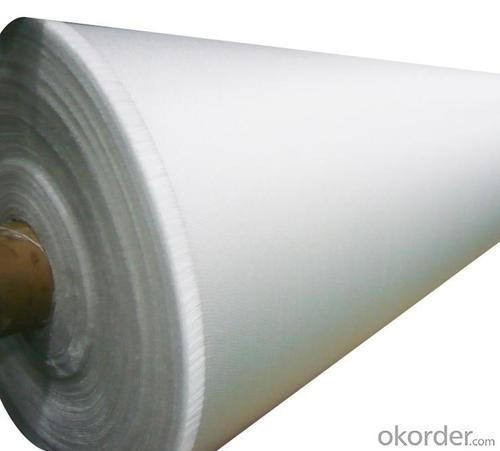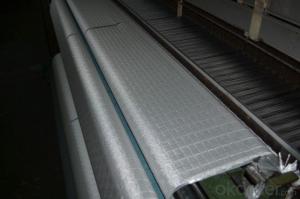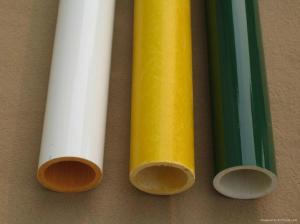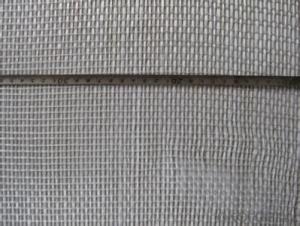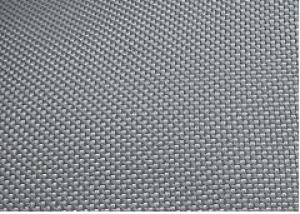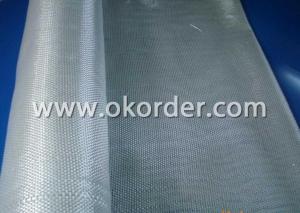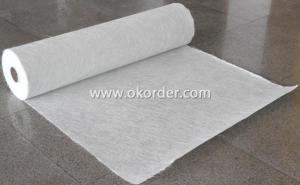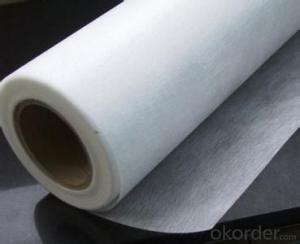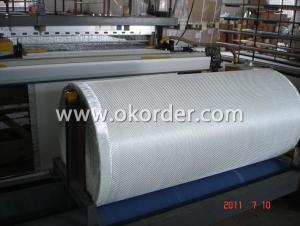Manufacturer of Fiberglass Fabrics 100g
- Loading Port:
- Shanghai Port
- Payment Terms:
- TT or LC
- Min Order Qty:
- 10000 M2 m²
- Supply Capability:
- 50000000 M2 Per Year m²/month
OKorder Service Pledge
OKorder Financial Service
You Might Also Like
Introduction of Fiberglass Fabric:
Fiberglass fabric is corrosion resistance, high intensity, electricity insulation, compatibility with other resin.Fiberglass fabric is widely used into electric insulation field for PCB or copper clad laminate.
Specifications of Fiberglass Fabric:
Fabric Count Warp×Fill(Per cm)
| Yarn(SI)
| Thickness(mm) (Rreference Only)
| Nominal Weight(g/m2)
| Weight Tolerance(g/m2) |
23.6×18.5 | 5 11 1×0 5 11 1×0 | 0.053 | 46.8 | 45.1-48.5 |
23.6×23.6 | 5 11 1×0 5 11 1×0 | 0.056 | 52.9 | 51.5-54.2 |
19.3×16.5 | 7 45* 1×0 7 45* 1×0 | 0.149 | 164.1 | 157.7-170.5 |
18.1×17.7 | 7 45* 1×0 7 45* 1×0 | 0.140 | 1654.0 | 158.0-171.0 |
23.6×19.7 | 6 33 1×0 6 33 1×0 | 0.125 | 148.0 | 142.8-153.2 |
20.0×10.8 | 9 331×0 9 74 1×0 | 0.135 | 146.2 | 142.1-150.3 |
20.5×20.5 | 9 34* 1×0 9 34* 1×0 | 0.114 | 138.3 | 133.6-143. |
23.6×22.0 | 7 22 1×0 5 11 1×0 | 0.079 | 78.0 | 75.6-80.4 |
22.0×18.9 | 7 22 1×0 7 22 1×0 | 0.084 | 90.9 | 88.5-93.2 |
23.6×22.8 | 7 22 1×0 7 22 1×0 | 0.094 | 103.8 | 100.7-106.8 |
26.0×21.7 | 7 22 1×0 7 22 1×0 | 0.095 | 108 | 104.8-111.2 |
17.3×12.2 | 9 681×0 9 68 1×0 | 0.173 | 203.4 | 198.0-208.9 |
17.9×13.4 | 9 68 1×0 9 68 1×0 | 0.18 | 210.0 | 204.5-215.3 |
17.3×11.4 | 9 68 1×0 9 102* 1×0 | 0.201 | 232.3 | 226.5-238.0 |
17.5×7.9 | 9 68 1×0 9 136* 1×0 | 0.254 | 227.8 | 221.1-234.7 |
17.4×10 | 9 68 1×0 9 136* 1×0 | 0.250 | 260.0 | 255.2-265.3 |


- Q: Can fiberglass fabric be used for reinforcing concrete?
- Fiberglass fabric serves as a useful tool in reinforcing concrete. Crafted from delicate glass fibers, this lightweight and resilient material finds widespread application in different sectors, particularly construction. By incorporating fiberglass fabric in concrete reinforcement, the tensile strength and durability of the structure are significantly enhanced. The high strength-to-weight ratio of fiberglass fabric renders it especially advantageous for concrete reinforcement. Its exceptional resistance to corrosion, chemical damage, and weathering make it suitable for both indoor and outdoor usage. Moreover, its non-magnetic and non-conductive properties make it the preferred option in areas where concerns regarding electromagnetic interference or conductivity arise. The process of reinforcing concrete with fiberglass fabric involves strategically placing the fabric amidst the layers of wet concrete during construction. Acting as reinforcement, the fabric efficiently distributes tensile stresses throughout the entirety of the concrete structure, bolstering its strength and preventing cracks or fractures. Furthermore, fiberglass fabric proves relatively effortless to handle and install. It can be expertly tailored to meet specific reinforcement requirements, taking on various shapes and sizes. Its versatility is further demonstrated by its ability to adapt to complex forms, be it through molding or wrapping. Consequently, it finds practical application in a wide range of concrete structures, including beams, columns, walls, and slabs. All in all, fiberglass fabric emerges as a dependable and effective material for reinforcing concrete. It confers numerous benefits, such as high strength, corrosion resistance, and ease of installation. Its inclusion in concrete reinforcement enhances both the structural integrity and lifespan of the concrete, thereby solidifying its status as a favored choice within the construction industry.
- Q: What are the safety precautions when working with fiberglass fabric?
- When working with fiberglass fabric, it is important to take several safety precautions. Firstly, wearing appropriate personal protective equipment (PPE) such as gloves, goggles, and a dust mask is essential to protect the skin, eyes, and respiratory system from potential irritants and fine particles. It is also crucial to work in a well-ventilated area or use a respirator to minimize the inhalation of fiberglass dust or fumes. To further prevent skin irritation or cuts, it is recommended to wear long sleeves, long pants, and closed-toe shoes. Additionally, avoiding contact with exposed skin and promptly washing any areas that come into contact with fiberglass fabric can help prevent irritation. When working with fiberglass fabric, it is important to handle it with care to avoid releasing fibers into the air. Cutting or sanding fiberglass materials should be done using tools with appropriate dust control measures, such as wet cutting or using a dust collection system. Properly disposing of waste material and cleaning up any fiberglass dust or debris is crucial to maintain a safe working environment. Overall, adhering to these safety precautions when working with fiberglass fabric can help minimize the risks associated with exposure to fiberglass particles and ensure a safer working environment.
- Q: Can fiberglass fabric be used for making insulation gaskets?
- Yes, fiberglass fabric can be used for making insulation gaskets. Fiberglass fabric is known for its excellent thermal insulation properties and is commonly used in a variety of thermal insulation applications. Its high temperature resistance and low thermal conductivity make it an ideal material for creating gaskets that can effectively seal and insulate against heat transfer. Additionally, fiberglass fabric is durable, lightweight, and flexible, making it easy to work with and suitable for various gasket designs. It is also resistant to chemicals and has good electrical insulation properties, further enhancing its suitability for insulation gaskets.
- Q: With what glue can stick glass steel cans?
- Hello, we are Tianjin good big sculpture, we do the glass fiber reinforced plastic mold sculpture, used is 502 glue, and is to use glass fiber reinforced plastic paste glass cloth, brush glass fiber reinforced plastic, and then dressing, grinding.
- Q: How much resin does 1 square meter 02 fiberglass cloth need to consume?
- Should be less than 200 grams of resin, depending on your craft and glass cloth varieties, hand paste process in general
- Q: Glass fiber cloth can be made into handbags, requirements of high temperature 680 degrees or more
- We try to do is pack, but now not sure whether the temperature has been reached, but the manufacturer is reply to the temperature, fastness is poor, (in order to increase the strength, and the waterproof, we added composite cloth, so the bag looks very thick), the other looks good, as long as the fastness to strengthen, meet standard
- Q: What are the different fiberglass fabric weaves for electrical insulation?
- There are several different fiberglass fabric weaves commonly used for electrical insulation. These weaves are designed to provide high electrical resistance and thermal stability, making them suitable for various applications in the electrical industry. One of the most commonly used weaves for electrical insulation is the plain weave. This weave consists of a simple over-under pattern, with each weft yarn passing alternatively over and under each warp yarn. The plain weave provides good strength and flexibility, making it suitable for applications where both electrical insulation and mechanical protection are required. Another common weave for electrical insulation is the satin weave. This weave is characterized by a more complex pattern, with multiple interlacing points between the warp and weft yarns. The satin weave provides a smoother surface, which can be advantageous in applications where the fabric needs to be in direct contact with conductive materials, as it reduces the risk of abrasion and damage. Twill weave is another popular option for electrical insulation. This weave is characterized by a diagonal pattern, with each weft yarn passing over two or more warp yarns before going under one. Twill weave fabrics offer higher strength and durability compared to plain weave fabrics, making them suitable for applications where increased mechanical protection is required. Lastly, there are specialty weaves available for specific electrical insulation needs. For example, leno weave is a type of weave that has a pair of warp yarns twisted around each weft yarn, resulting in a more secure fabric structure. Leno weave fabrics are often used in applications where high temperature resistance and dimensional stability are crucial. In conclusion, different fiberglass fabric weaves are used for electrical insulation depending on the specific requirements of the application. Plain weave, satin weave, twill weave, and specialty weaves like leno weave are all commonly employed to provide the necessary electrical resistance and thermal stability.
- Q: What are the weight options for fiberglass fabric?
- The weight options for fiberglass fabric typically range from 3 ounces per square yard to 34 ounces per square yard.
- Q: Can fiberglass fabric be used for insulation sheets?
- Indeed, insulation sheets can make use of fiberglass fabric. The reason for its extensive utilization in insulation scenarios stems from its exceptional thermal attributes. Being a non-combustible substance capable of enduring high temperatures, fiberglass fabric becomes an ideal choice for insulating diverse areas like walls, roofs, pipes, and ducts. Furthermore, the fabric exhibits resistance to moisture, thereby thwarting the proliferation of mold and mildew. Moreover, its remarkable durability enables it to effectively retain heat or cold, ensuring efficient insulation in both residential and commercial structures.
- Q: What material can be used instead of fiberglass cloth?
- Glass fiber cloth has many kinds of specifications and thickness, can be purchased as needed, non-woven fabrics without glass fiber fabric, strong, and generally can not be replaced.
Send your message to us
Manufacturer of Fiberglass Fabrics 100g
- Loading Port:
- Shanghai Port
- Payment Terms:
- TT or LC
- Min Order Qty:
- 10000 M2 m²
- Supply Capability:
- 50000000 M2 Per Year m²/month
OKorder Service Pledge
OKorder Financial Service
Similar products
Hot products
Hot Searches
Related keywords
